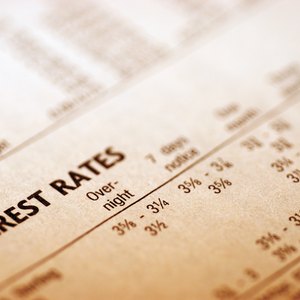
A variable-rate mortgage, also known as an adjustable-rate mortgage or arm loan, is one where the variable interest rate is hinged to the prevailing rate environment at any given time, so it can fluctuate. The rate is typically determined by a financial index (or the prime rate), and it can rise or fall periodically depending on that index, directly affecting the amount of your mortgage payment. What you’re paying for your home loan in Year 1 can be significantly different from your monthly payments in Year 10.
ARMs Have Lower Interest Rates at First
Different types of mortgage loans can be subject to varying interest rates. Taking out a variable-rate loan rather than a fixed-rate mortgage – one where the interest rate you’re paying never changes – can be tempting, because your rate during the initial rate period of your loan will most likely be less than the fixed interest rate.
Think of this as an introductory interest rate. Your lender is effectively rewarding you for taking on some of the risk that interest rates rise significantly over the life of your loan. The lender of a fixed-rate mortgage is stuck with the interest rate it gave you at the inception of the loan. Interest represents income and profit to lenders, so they want a rate that's as high as is feasible. Your interest rate is what you pay. as borrowers in exchange for them giving you the loan amount to buy your home.
You’ll therefore enjoy lower mortgage payments for a period of time with a variable-rate mortgage, but it’s not permanent. Rate changes that go along with interest rate changes are virtually guaranteed over the term of your mortgage, with higher rates more often than not.
Read More: Variable Rate vs. Fixed Rate – What You Need to Know
Your Rate Is Tied to Index and Margin
Lenders calculate the amount of interest you're charged for an ARM based on two components: an index and a margin. The index reflects the prevailing interest rate at any given time. A margin is a lender add-on that's a percentage over and above the index. For example, your index rate might be 3 percent. Your interest rate would be 5 percent if the margin was 2 percent. The margin is typically constant, but the index is not. Homeowners can expect their mortgage payments to rise when the index climbs.
And there’s not just one index. Many lenders use the London Interbank Offered Rate, or LIBOR. Others might use the Cost of Funds Index or the one-year Treasury constant maturity rate. Still others might use indexes of their own design or the prime rate. The benchmark used should appear on your loan estimate, but some lenders reserve the right to change it at any time.
As for that margin, it's at the discretion of your lender. Some banks and institutions base this on your credit history. The lower your credit score, the higher your margin will likely be. Homebuyers with truly top-notch credit scores might not be charged a margin at all. This should appear on your loan estimate as well.
Read More: How to Calculate Interest Rate From Index and Margin
If you’re trying to decide between a variable rate or a fixed-rate mortgage loan, you need to make an honest assessment of your earnings potential and your job security.
Adjustments Can Happen Frequently
Your initial interest rate might not be adjusted for as long as five years or even longer after you first take out your mortgage loan. Then again, it could happen as quickly as one month, according to the Consumer Financial Protection Bureau. Typical adjustment periods are monthly, quarterly, annually, or every three or five years.
ARMs are usually designated by a couple of numbers that look like a fraction, such as 3/3m. The first number tells you how long your introductory interest rate will apply – in this case, it’s three years. The second number tells you how frequently it will be adjusted after that initial base period, or every three months if you have a 3/3m mortgage. A 5/1 variable rate mortgage would let you keep the same initial interest rate for five years before the rate would begin adjusting annually over the remaining loan term.
Unfortunately, not all mortgage lenders will adjust your interest rate downward if the index drops. It’s possible that the best you can hope for is that it won’t go up at the next adjustment. And some loans don’t provide for an introductory period before adjustments begin, although this is rare. Your rate could begin seesawing immediately in this case, if your lender will decrease it at all when the index drops.
It’s Not Just About the Index
Another factor to consider is that your lender might reserve the right to change your margin. In other words, the index hasn’t budged, but your interest rate increases regardless because your margin has gone up. The CFPB advises asking what your annual percentage rate on the mortgage loan will be. It’s likely that your monthly payments will increase even without a hike in the index rate if the APR you’re quoted is more than the rate you’ll be paying at the inception of the loan.
Lenders Sometimes Cap Interest Rates
Take a deep breath before you run off in search of the first available fixed-rate loan instead. This might all sound discouraging, particularly if you’re the type who really likes consistency in your life, but some lenders will at least set a cap in place for your interest rate. It can’t increase above a certain point, even if the index soars.
A periodic adjustment rate cap puts a limit on how much your interest rate can change from one adjustment period to the next, or sometimes annually. A lifetime cap prevents it from ever increasing above a certain point over the life of the loan. A payment cap prevents your mortgage payment from exceeding a set amount. For example, a 5 percent payment cap would limit any increase in your mortgage payment to 5 percent even if the interest rate goes up more than that.
Read More: What Is an Adjustable Rate Mortgage?
Lenders can also limit how much your interest payment – and by extension, your mortgage payment – can decrease, if they even allow downward adjustments at all.
Other Considerations About Mortgage Rates
If you’re trying to decide between a variable rate or a fixed-rate mortgage loan, you need to make an honest assessment of your earnings potential and your job security. It’s not just a matter of being able to afford your mortgage payments now if you choose an adjustable-rate loan, but of being as sure as possible that you can still do so down the road if your interest rate and mortgage payment increase substantially. Then again, you might anticipate earning more money in the future than you do now, which could make those introductory interest rates a pretty good deal.
Another important consideration is how long you think you’ll own your home. Those initial reduced interest and loan payments during the introductory time period can save you a lot of money in the short term if you anticipate moving on before the time comes when the rate begins adjusting. The flip side is that you could be making some seriously high mortgage payments years down the road with a variable rate mortgage if you think you’ll remain in residence for decades. As an alternative, you might refinance in the future with a large down payment on a fixed-rate loan with a favorable rate.
You might also want to look into the index that a lender uses before you sign on the dotted line of a mortgage contract. Determine its history, and how often and how much it tends to go up or down. Then ask yourself if you have the financial resources and the temperament to deal with that. You’ll want to shop around among lenders for the lowest margin as well.
Read More: What Are Points on a Mortgage?
References
- Federal Reserve Board: Consumer Handbook on Adjustable-Rate Mortgages
- Consumer Financial Protection Bureau: Consumer Handbook on Adjustable-Rate Mortgages
- HUD.gov: Adjustable Rate Mortgages
- Bankrate: Variable-Rate Mortgage
- Corporate Financial Institute: Variable-Rate Mortgage
- Marimark Mortgage: Pros and Cons of a Variable-Rate Mortgage
Writer Bio
Beverly Bird has been writing professionally for over 30 years. She is also a paralegal, specializing in areas of personal finance, bankruptcy and estate law. She writes as the tax expert for The Balance.

